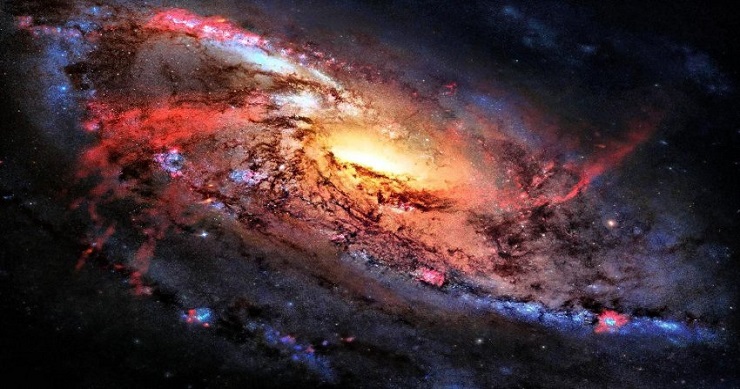New observations of a stellar nursery suggest that star formation is self-regulated, resolving discrepancies between simulated and observed efficiencies of star formation. Young, massive stars inject energy into their surroundings, disrupting star formation by shredding the surrounding medium and encouraging it by collecting dense gas shells that are prone to gravitational collapse.
However, these new findings suggest that this stellar feedback significantly suppresses star formation. This discovery helps explain why proposed rapid star-formation rates have long misaligned with observations. The formation of high-mass stars is associated with the gravitational collapse of the surrounding cloud of molecular gas, which should induce further star formation. However, only a few percent of the molecular cloud’s mass typically becomes new stars.
This research suggests that stellar feedback disperses the collapsing molecular cloud on the same timescale that new stars form, preventing high star-formation rates. The researchers are now studying other molecular clouds to further understand the physics of high-mass-star formation in galaxies.
Key Takeaways:
- New research suggests that the process of star formation is significantly suppressed by stellar feedback, resolving long-standing inconsistencies between theoretical predictions and observed star-formation rates.
- Data from NASA’s Stratospheric Observatory for Infrared Astronomy (SOFIA) and the Chandra X-ray Observatory has enabled researchers to track star formation in real time, revealing the impact of stellar feedback on surrounding molecular clouds.
- The study of molecular clouds of different stellar environments and evolutionary ages has provided a consistent framework for understanding the detailed physics of high-mass-star formation in galaxies, indicating a self-regulating pattern of mass ejection and cloud dispersal.
“Young, massive stars inject energy into their surroundings in a way that both disrupts star formation by shredding the surrounding medium and encourages it by collecting dense gas shells that are prone to gravitational collapse. Which of these feedback processes dominates has been unclear, but new observations by Lars Bonne of NASA’s Ames Research Center and his colleagues suggest that stellar feedback significantly suppresses star formation.”
More details: here


Leave a Reply